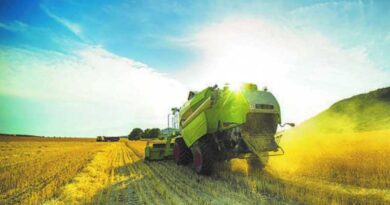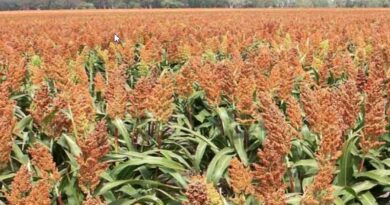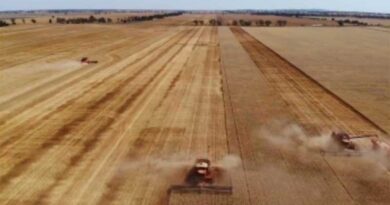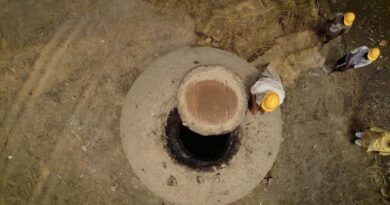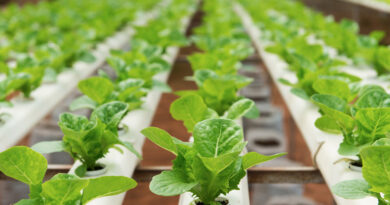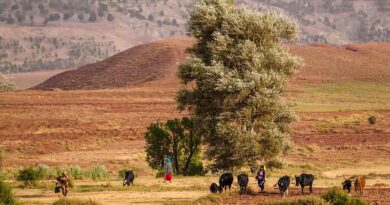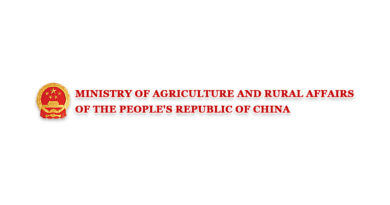Growers contemplating burning to manage high stubble loads encouraged to consider implications
16 February 2023, AU: Significantly high cereal stubble loads leftover from a large 2022 winter crop mean that some northern growers are considering burning to help manage stubble, weeds and improve trafficability prior to the upcoming season.
While in some cases burning can be the most pragmatic solution for managing large stubbles, extensive research conducted by the Grains Research and Development Corporation (GRDC) has shown that this practice is often best avoided as low groundcover reduces water capture and storage and increases the risk of erosion and nutrient loss.
GRDC Northern Region Panel member and Liverpool Plains agronomic consultant, Pete McKenzie, says some growers have been concerned they won’t be able to get through high cereal stubble loads to plant a crop this winter and have considered burning to help mitigate this risk.
There’s also a perception that with the inevitable high disease pressure, burning could be an option for growers to reduce inoculum loads.
“The fact of the matter is, for cereal diseases like Fusarium crown rot, burning won’t do a lot to prevent infections as it’s not a quick fix solution,” Mr McKenzie says.
“Growers will also expose themselves to implications this season and into the future if they burn all their stubble, losing valuable ground cover and potentially nutrients.”
Similarly, NSW Department of Primary Industries Senior Plant Pathologist, Steven Simpfendorfer, says while burning stubble could help growers eliminate above ground FCR inoculum, it has no impact on inoculum levels in the crown tissue below ground.
“There can still be significant levels of Fusarium crown rot risk below ground,” he says.
“Burning stubble can reduce risk but it won’t eliminate it and growers need to remember the 2017 season, where a lot of cereal stubble was burnt after a big 2016 season and then growers weren’t able to produce decent cereal crops to get that stubble cover back.
“It’s a really risky strategy, especially in further north and western production areas, and there’s plenty of integrated disease management strategies growers can look at to help minimise risk that are better than burning.
Dr Simpfendorfer discusses FCR management strategies in a recent GRDC article.
Mr McKenzie says that while burning could be a plausible option for some, growers should have a solid understanding of the implications it could cause them this season and into the future before they set fire to any stubble.
“An analogy I use with my growers is asking them to count how many hectares they want to burn and then consider how much nitrogen’s tied up in that stubble,” he says.
“When you ask them if they’d burn the money they’d spend on the nitrogen in that stubble, their answer is usually no.
“As an estimate for a 5 t/ha wheat stubble you will lose 25 kg N/ha which is $42/ha priced as urea.
“It’s important to remember that when there’s nitrogen tied up in stubble, there’s an opportunity for that to be delivered to the soil during rainfall events throughout the season. If you burn it, you most definitely lose it.
“I think we tend to have short memories after a few good seasons. During the drought, stubble cover was invaluable for maintaining top soil and retaining moisture,” he says.
“If predictions of a drier season come to fruition, it would be a shame to have lost the soil protection that stubble can provide.”
Mr McKenzie says growers have options to control stubble that don’t involve burning, including slashing it to a shorter level, fitting coulters to a front rig to cut through stubble and prevent planter blockage and looking at cropping rotation options.
“Especially if growers are considering burning to manage disease, they could instead look at rotational options that could help them mitigate inoculum – like sowing a legume instead of a cereal crop,” he says.
“At the end of the day, if growers have considered all the implications and burning stubble is still the most viable option, they should consider opting for a later, cold burn as they’d lose less nutrients this way.
“The later you do it in the season, the more chance there is for any nutrients tied up in the stubble to make its way into the soil.”
GRDC Northern Grower Relations Manager Graeme Sandral says burning is still used across the northern region, particularly by growers south of Dubbo looking to manage stubbles for sowing or help control other problems such as slugs for following canola.
“GRDC has invested in significant stubble management research to help guide growers in managing stubble loads after harvest to make the best possible management decisions in preparation for sowing,” he says.
“Extensive research has shown the benefits of maintaining stubble to secure ground cover in paddocks, including capturing and conserving soil moisture, retaining nutrients and protecting top soil.
Mr Sandral says there was plenty of resources growers could look at to help them decide whether burning stubble is a good management option prior to the upcoming season on the GRDC website:
Also Read: Developing Agricultural Research Institutes
(For Latest Agriculture News & Updates, follow Krishak Jagat on Google News)



